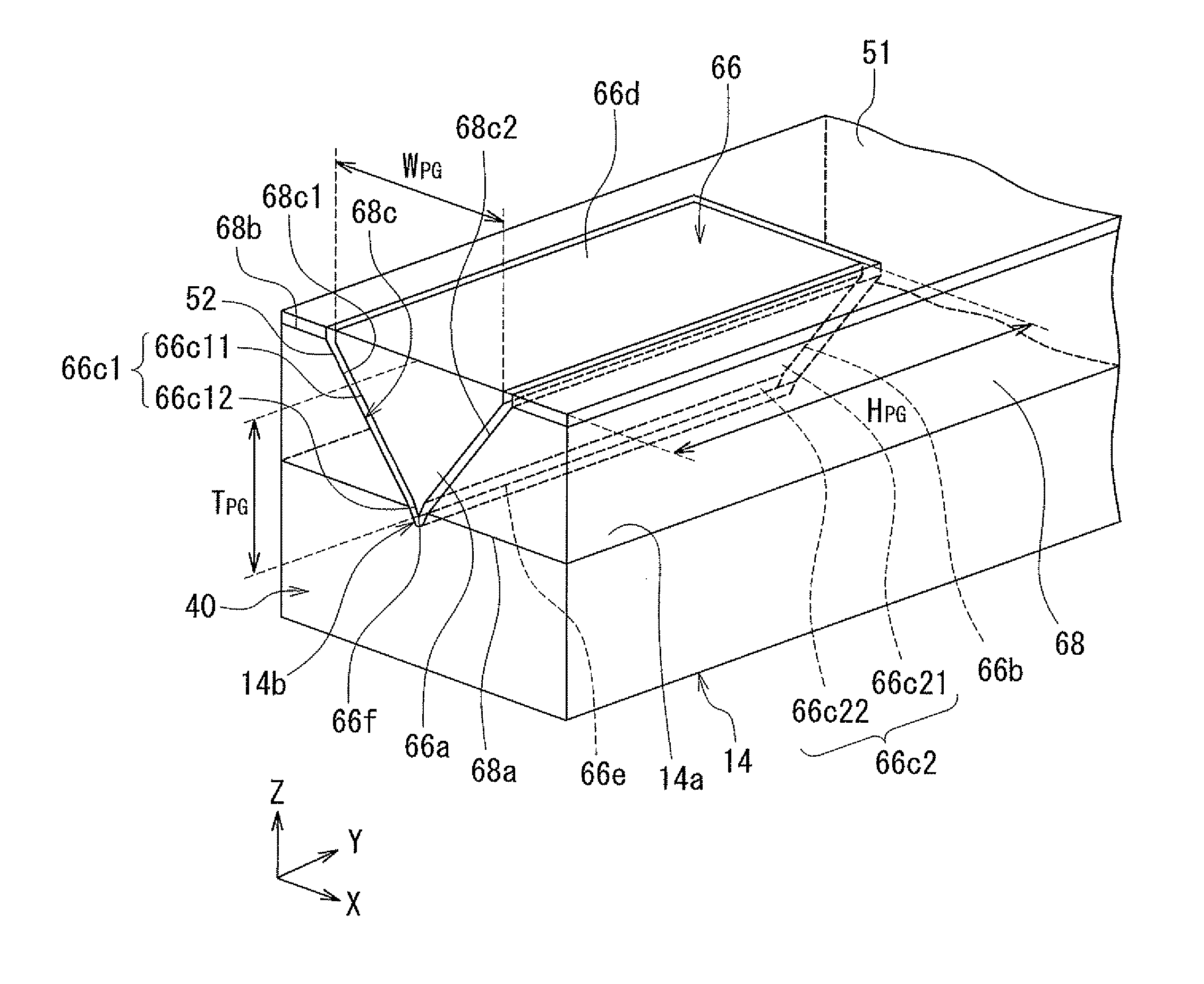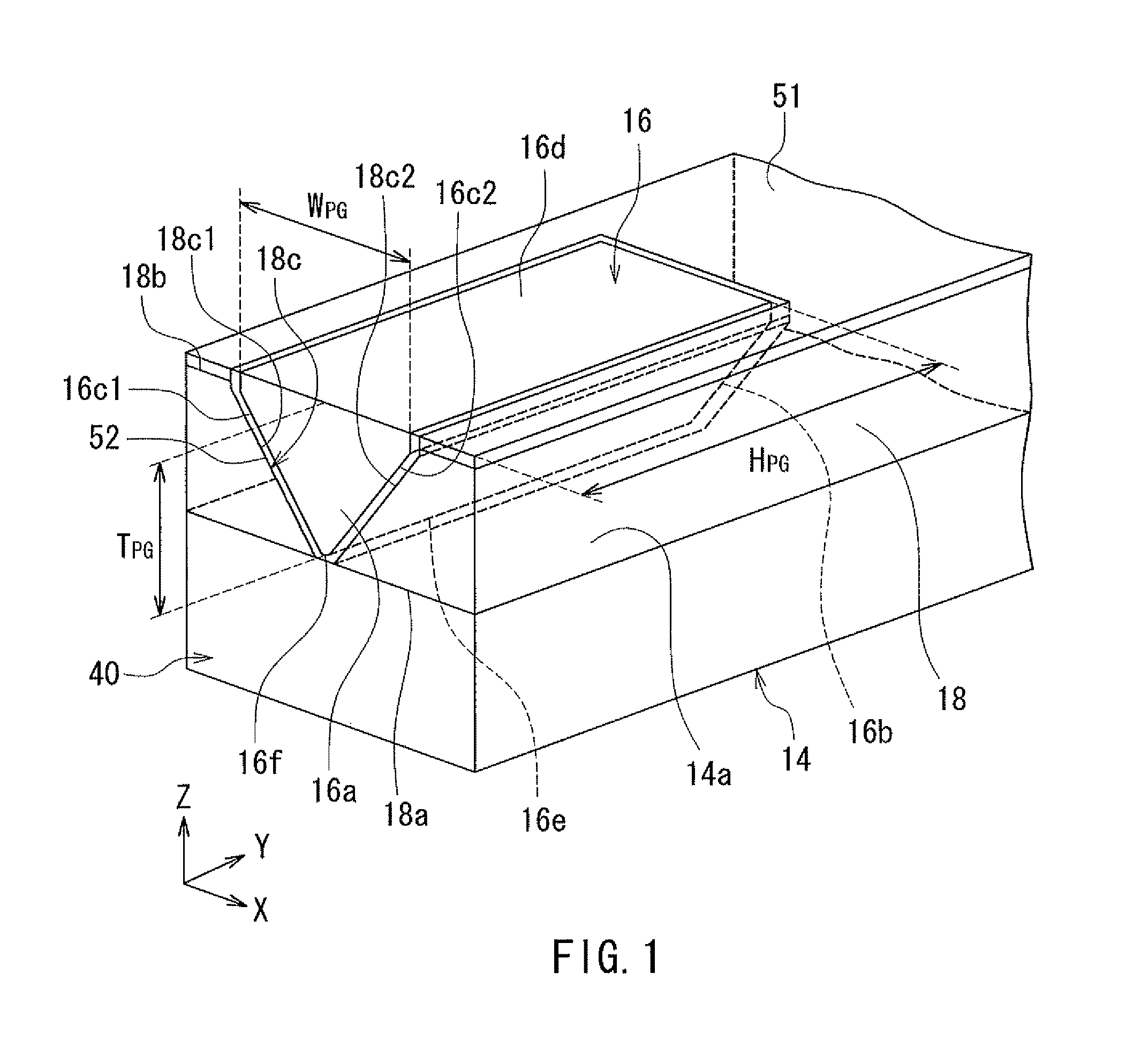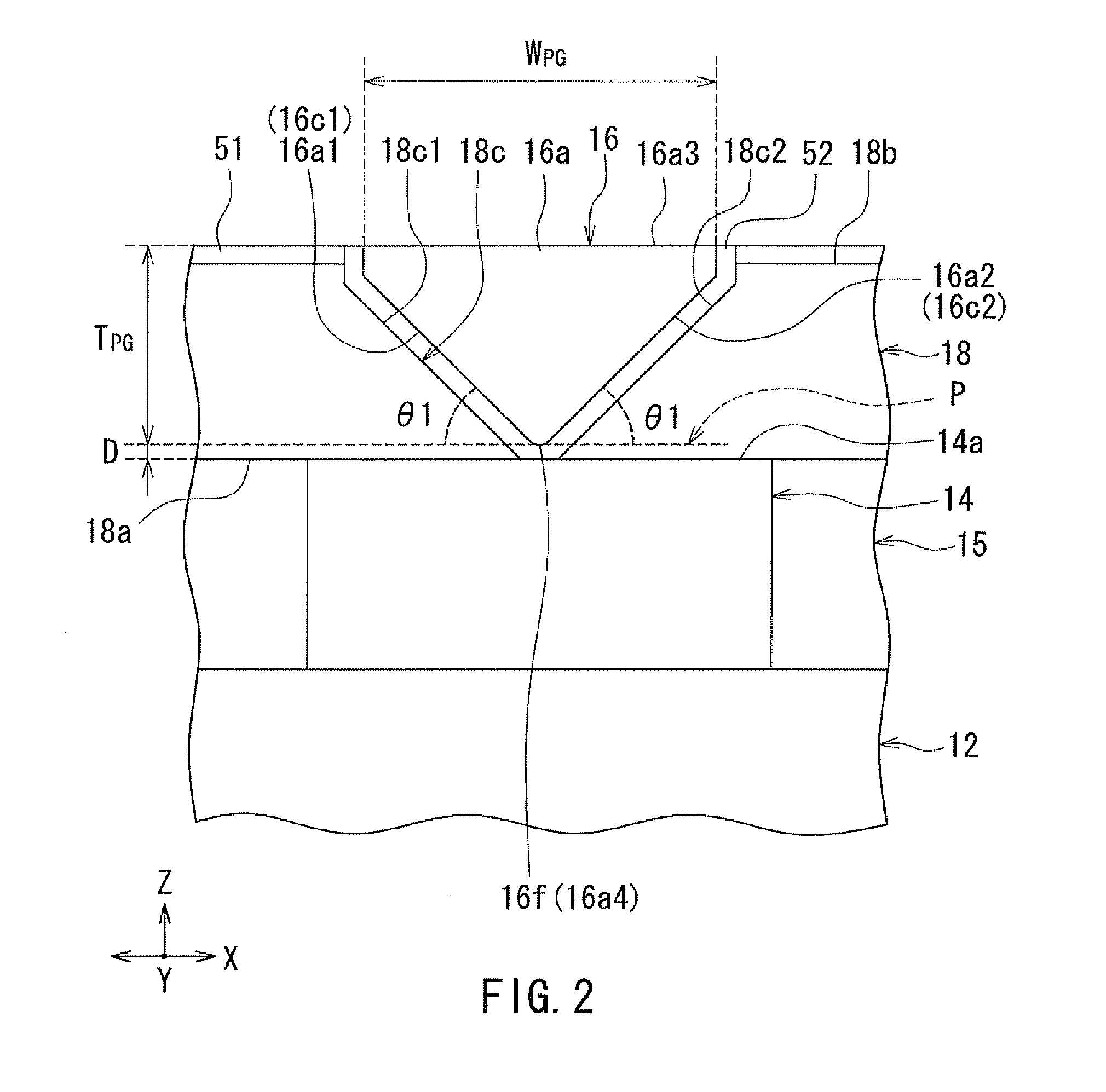Method of manufacturing near-field light generator including waveguide and plasmon generator
a generator and waveguide technology, applied in the field of manufacturing a near-field light generator, can solve the problems of increasing the coercivity of the recording medium, reducing the thermal stability of the magnetization of the magnetic fine particles, and difficult to perform data writing with the existing magnetic head, so as to reduce the variation in distance
- Summary
- Abstract
- Description
- Claims
- Application Information
AI Technical Summary
Benefits of technology
Problems solved by technology
Method used
Image
Examples
first embodiment
[0053]Preferred embodiments of the present invention will now be described in detail with reference to the drawings. First, reference is made to FIG. 1 to FIG. 6 to describe the configuration of a thermally-assisted magnetic recording head according to a first embodiment of the invention. FIG. 1 is a perspective view showing the main part of the thermally-assisted magnetic recording head. FIG. 2 is a front view showing a part of the medium facing surface of the thermally-assisted magnetic recording head. FIG. 3 is a cross-sectional view showing the configuration of the thermally-assisted magnetic recording head. FIG. 4 is a front view showing the medium facing surface of the thermally-assisted magnetic recording head. FIG. 5 is a plan view showing a first layer of a coil of the thermally-assisted magnetic recording head. FIG. 6 is a plan view showing a second layer of the coil of the thermally-assisted magnetic recording head.
[0054]The thermally-assisted magnetic recording head acco...
second embodiment
[0119]A thermally-assisted magnetic recording head according to a second embodiment of the invention will now be described with reference to FIG. 14 to FIG. 16. FIG. 14 is a perspective view showing the main part of the thermally-assisted magnetic recording head according to the present embodiment. FIG. 15 is a front view showing a part of the medium facing surface of the thermally-assisted magnetic recording head according to the present embodiment. FIG. 16 is a magnified partial front view of the plasmon generator shown in FIG. 15.
[0120]The thermally-assisted magnetic recording head according to the present embodiment has a plasmon generator 66 and a clad layer 68 instead of the plasmon generator 16 and the clad layer 18 of the first embodiment. The near-field light generator according to the present embodiment has the waveguide 14, the clad layer 68, the plasmon generator 66, and the dielectric film 52. The plasmon generator 66 is made of the same material as that of the plasmon ...
PUM
| Property | Measurement | Unit |
|---|---|---|
| refractive index | aaaaa | aaaaa |
| refractive index | aaaaa | aaaaa |
| angle θ1 | aaaaa | aaaaa |
Abstract
Description
Claims
Application Information
 Login to View More
Login to View More - R&D
- Intellectual Property
- Life Sciences
- Materials
- Tech Scout
- Unparalleled Data Quality
- Higher Quality Content
- 60% Fewer Hallucinations
Browse by: Latest US Patents, China's latest patents, Technical Efficacy Thesaurus, Application Domain, Technology Topic, Popular Technical Reports.
© 2025 PatSnap. All rights reserved.Legal|Privacy policy|Modern Slavery Act Transparency Statement|Sitemap|About US| Contact US: help@patsnap.com



